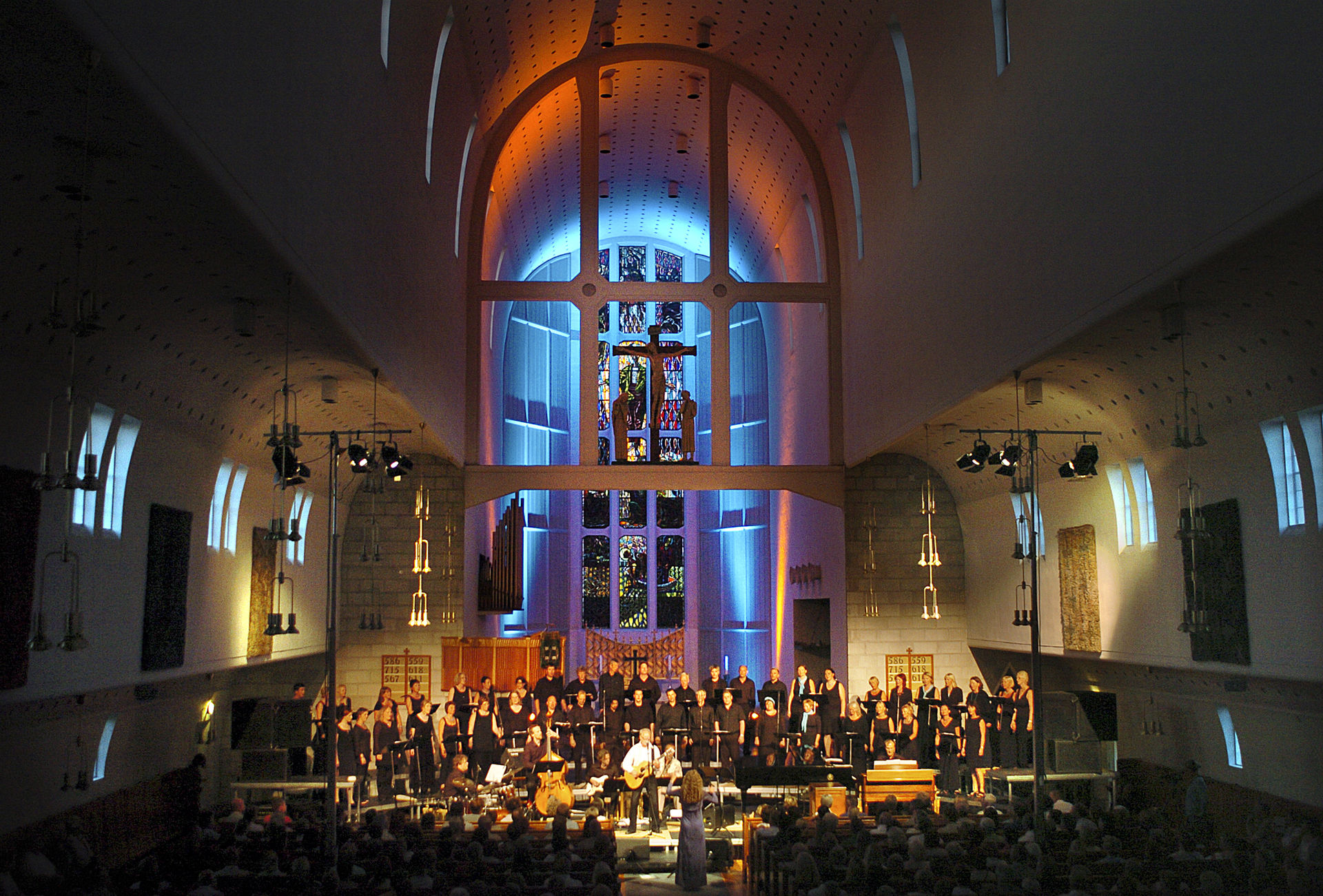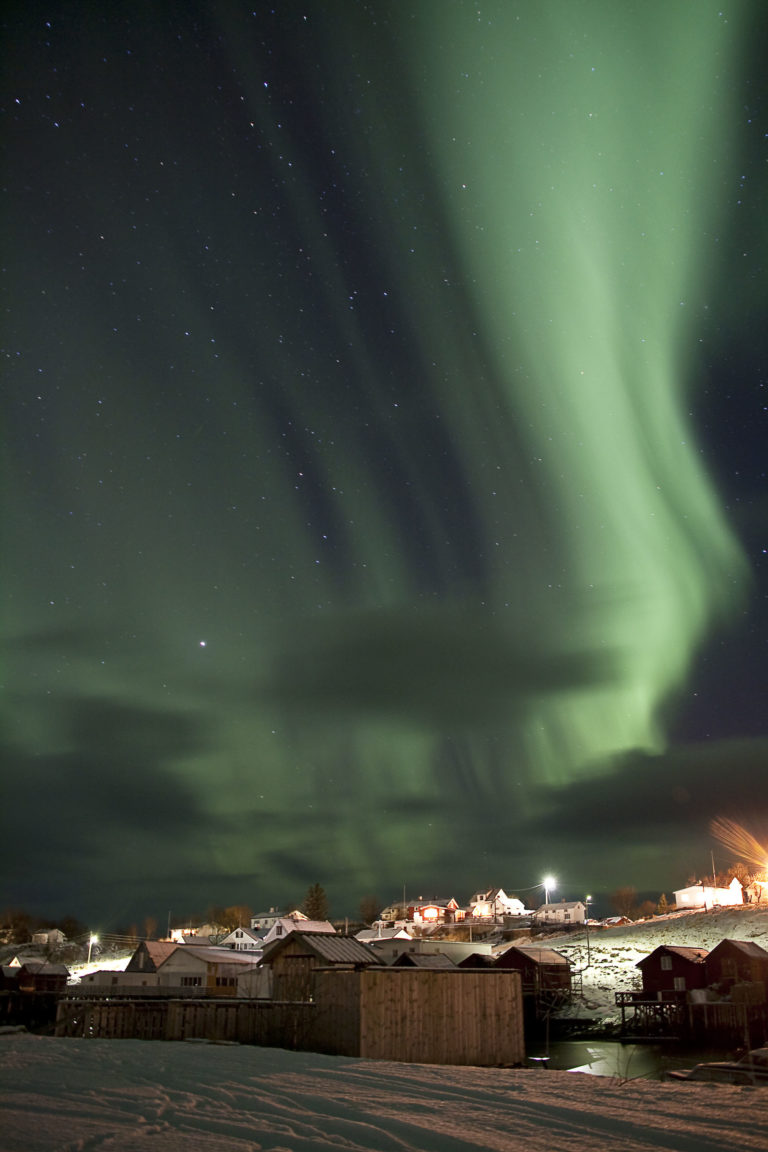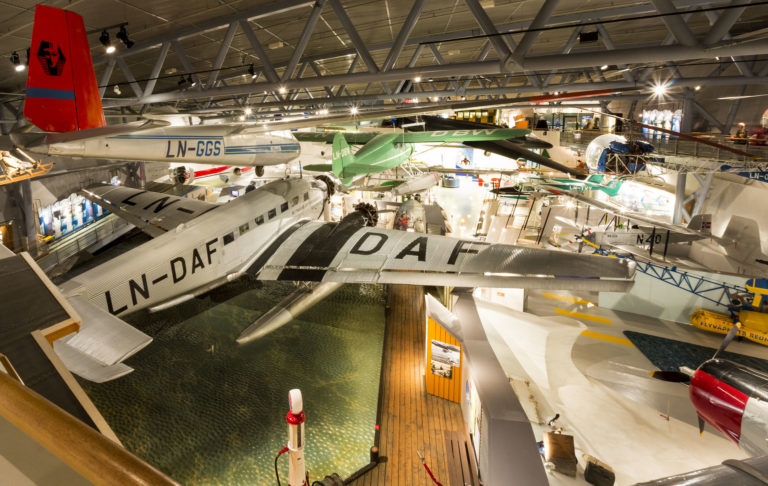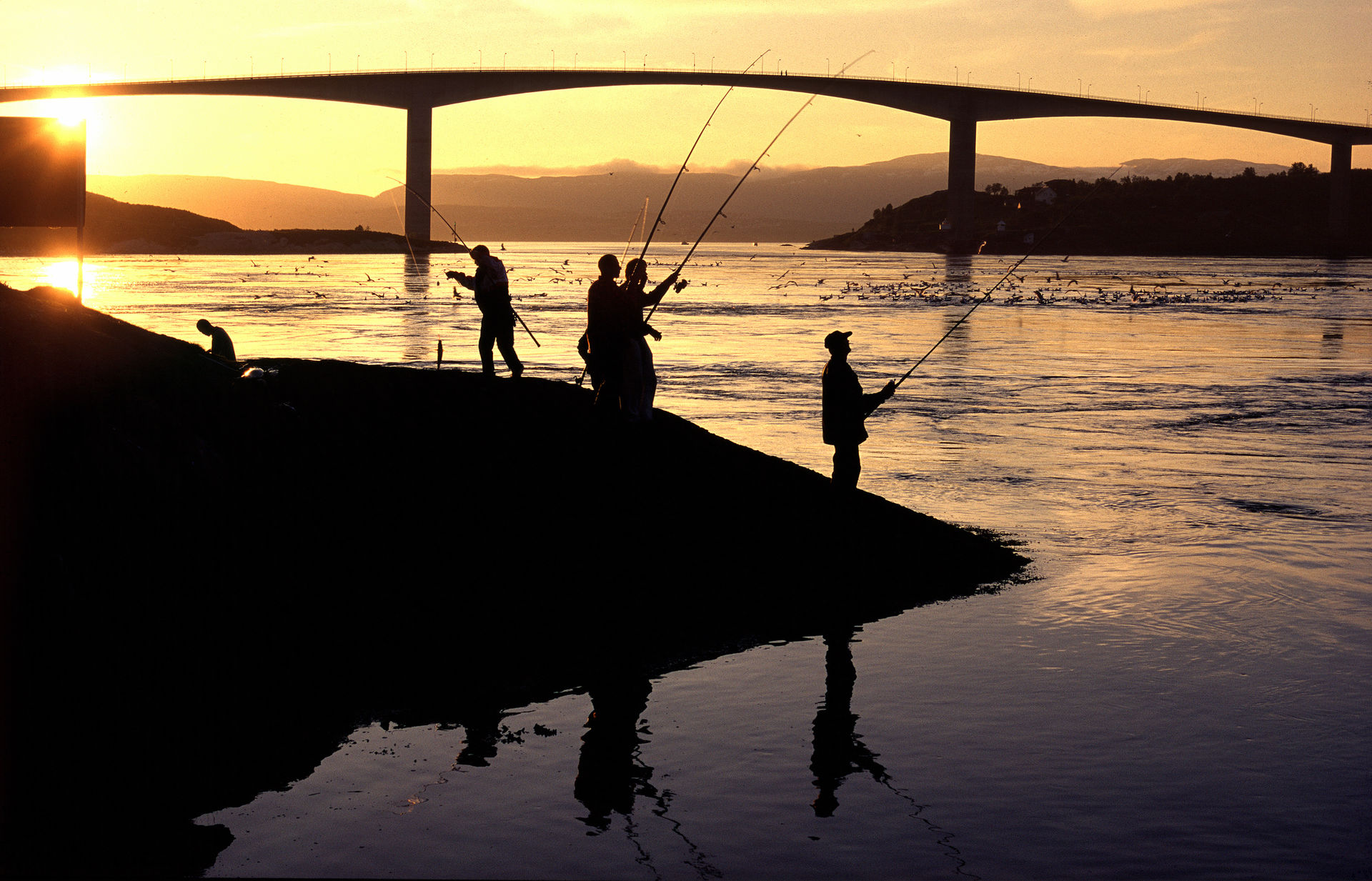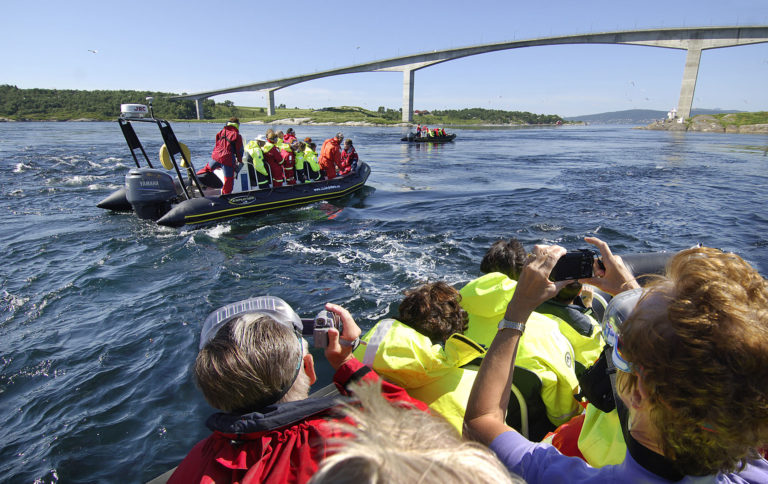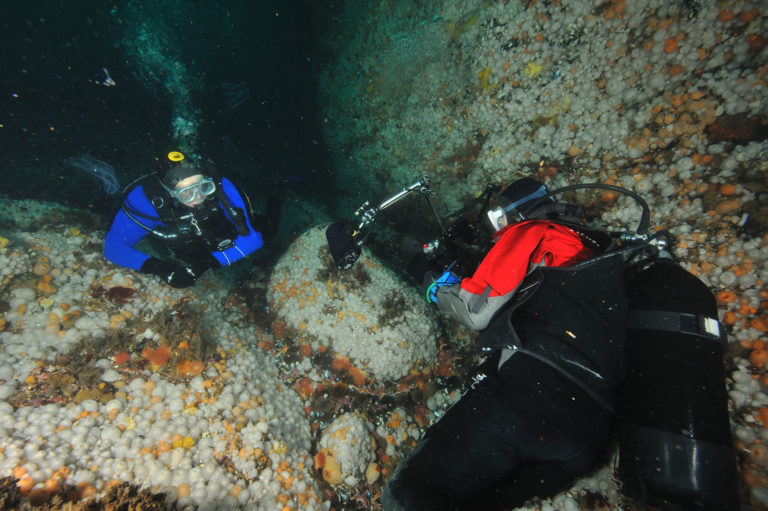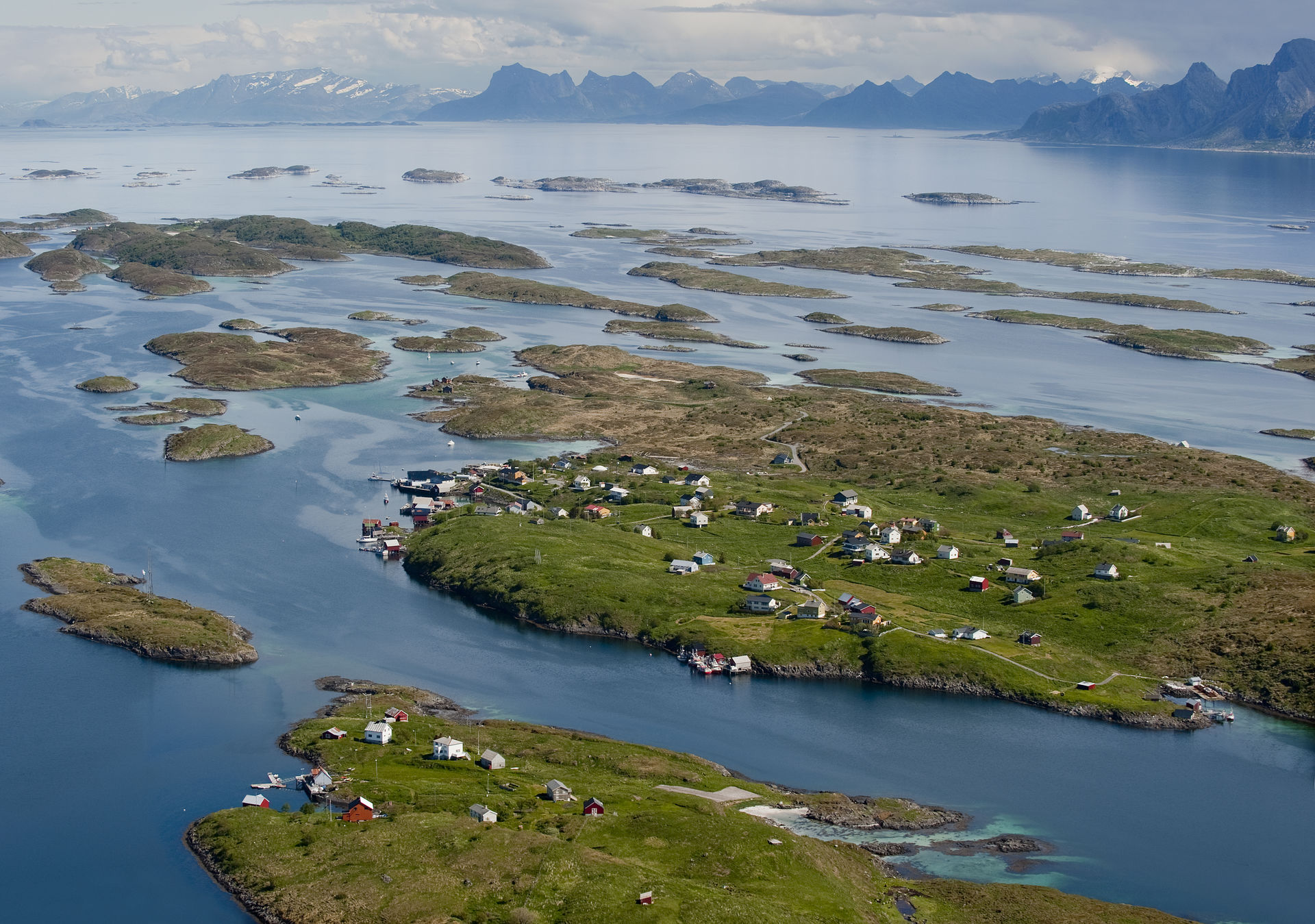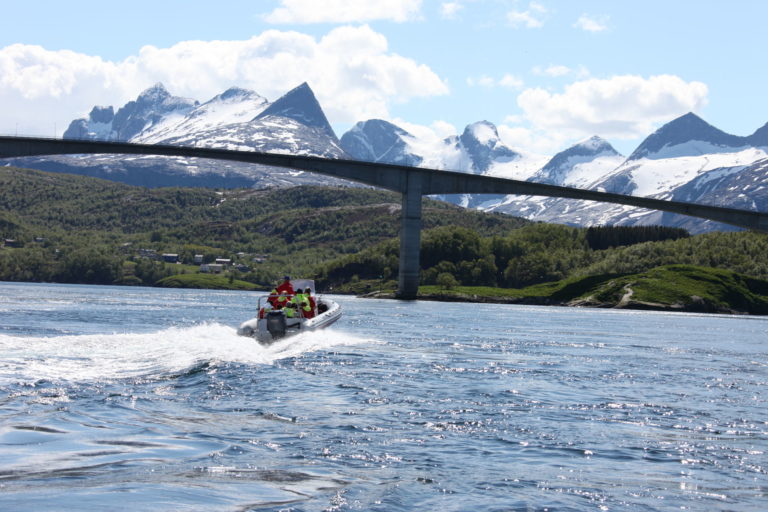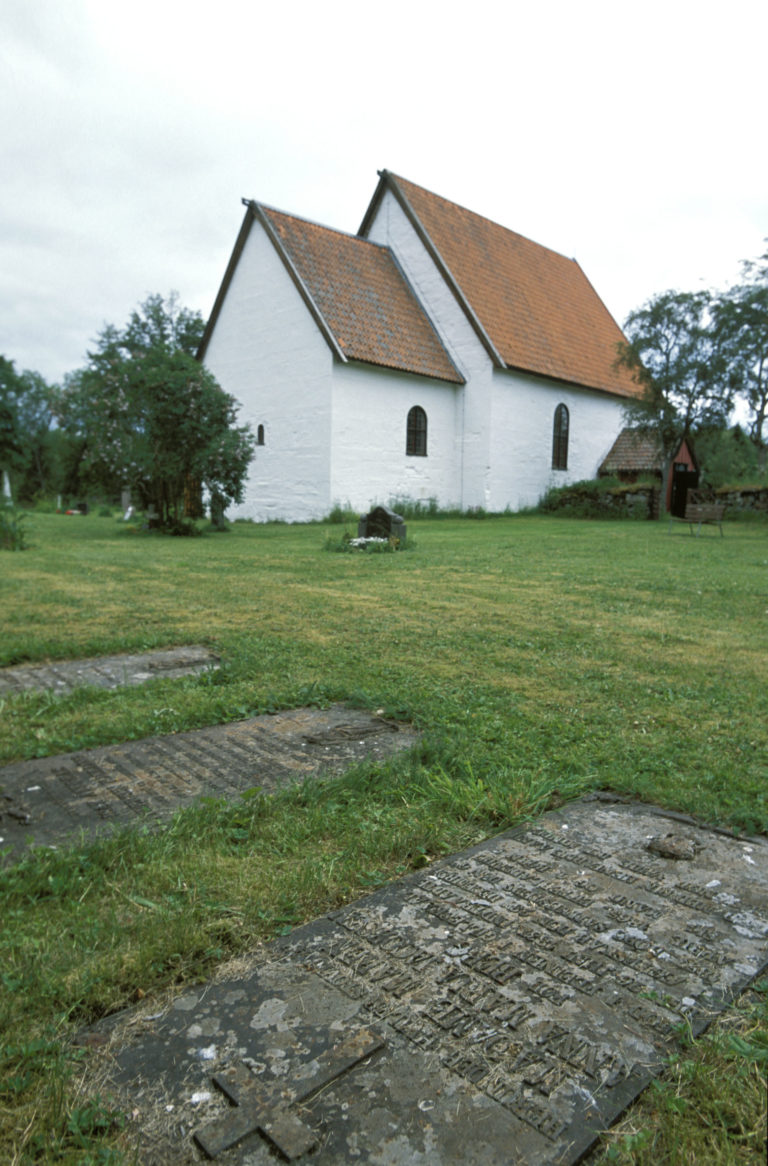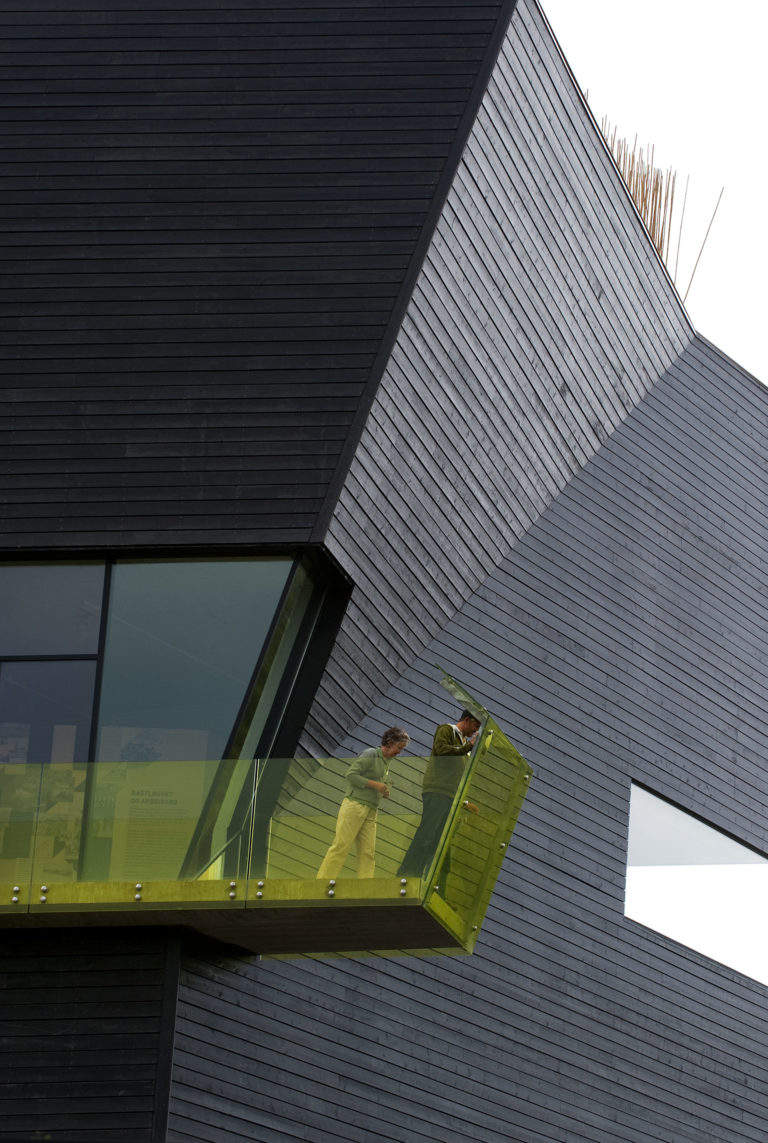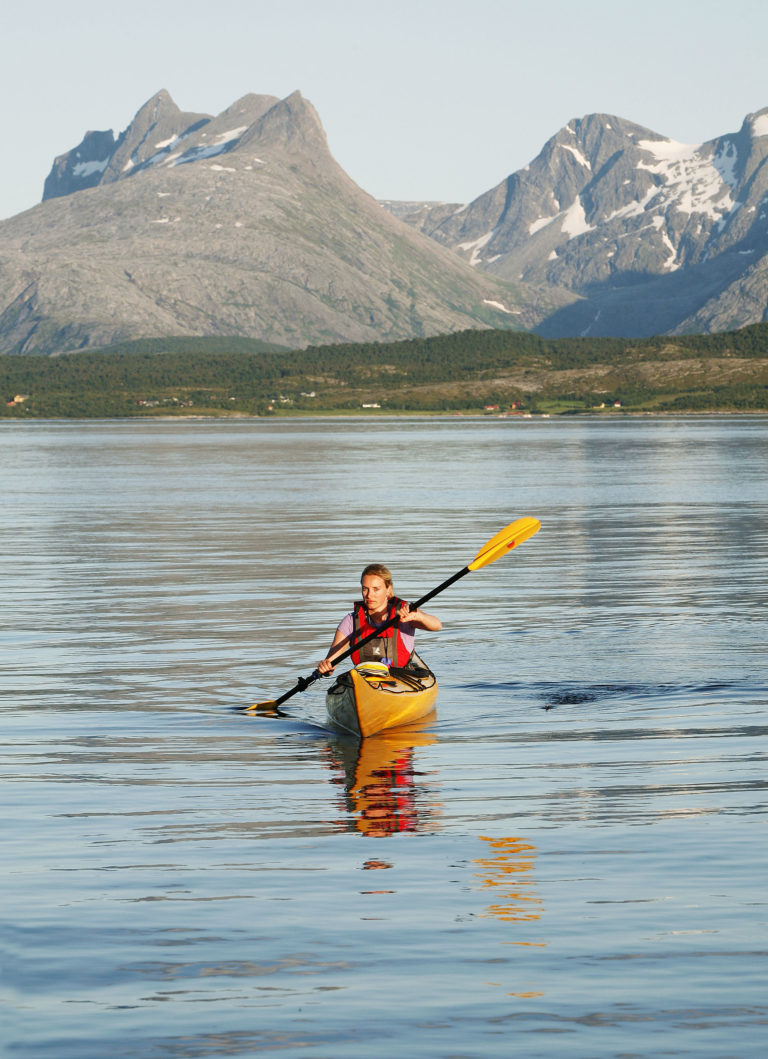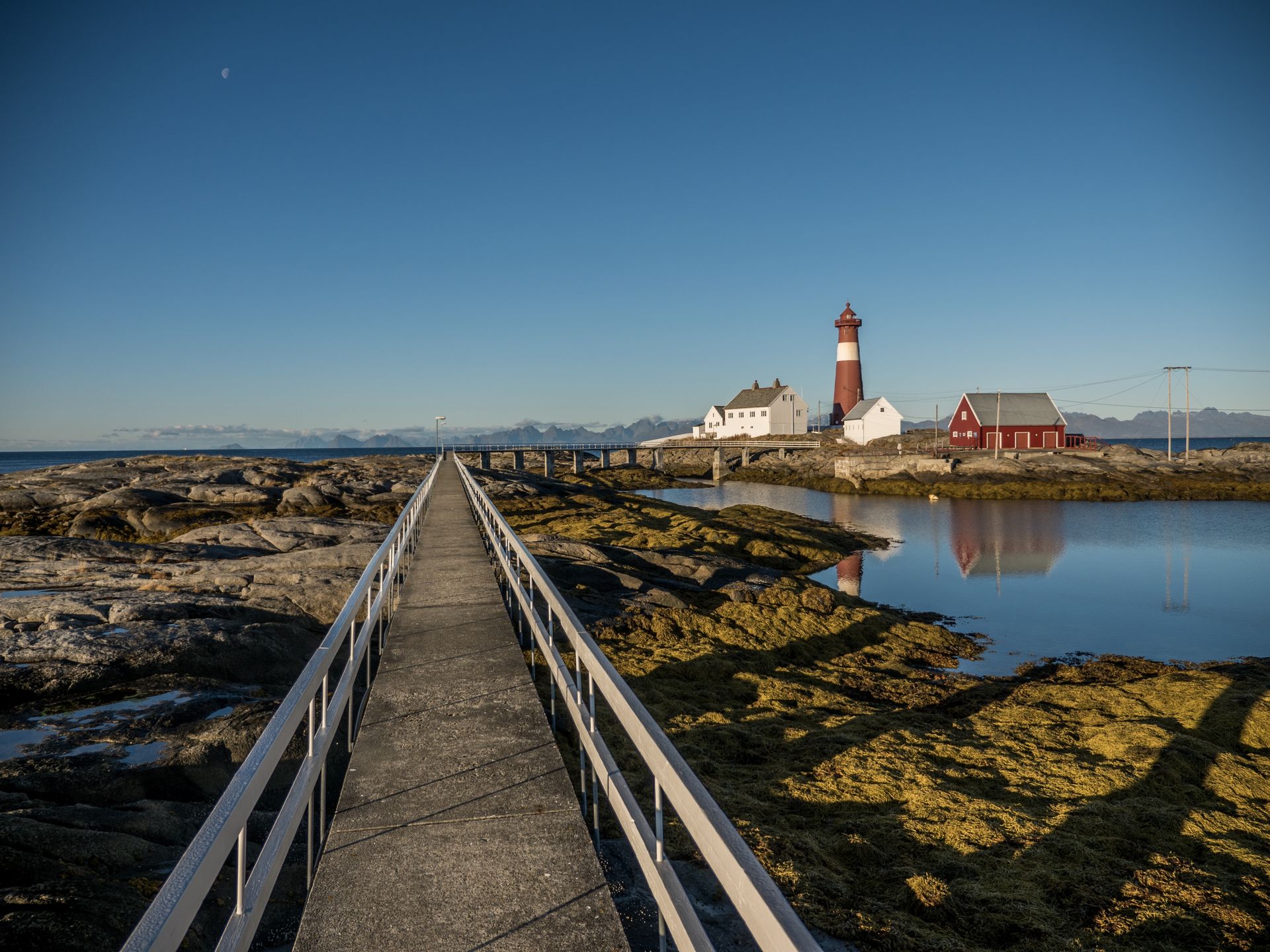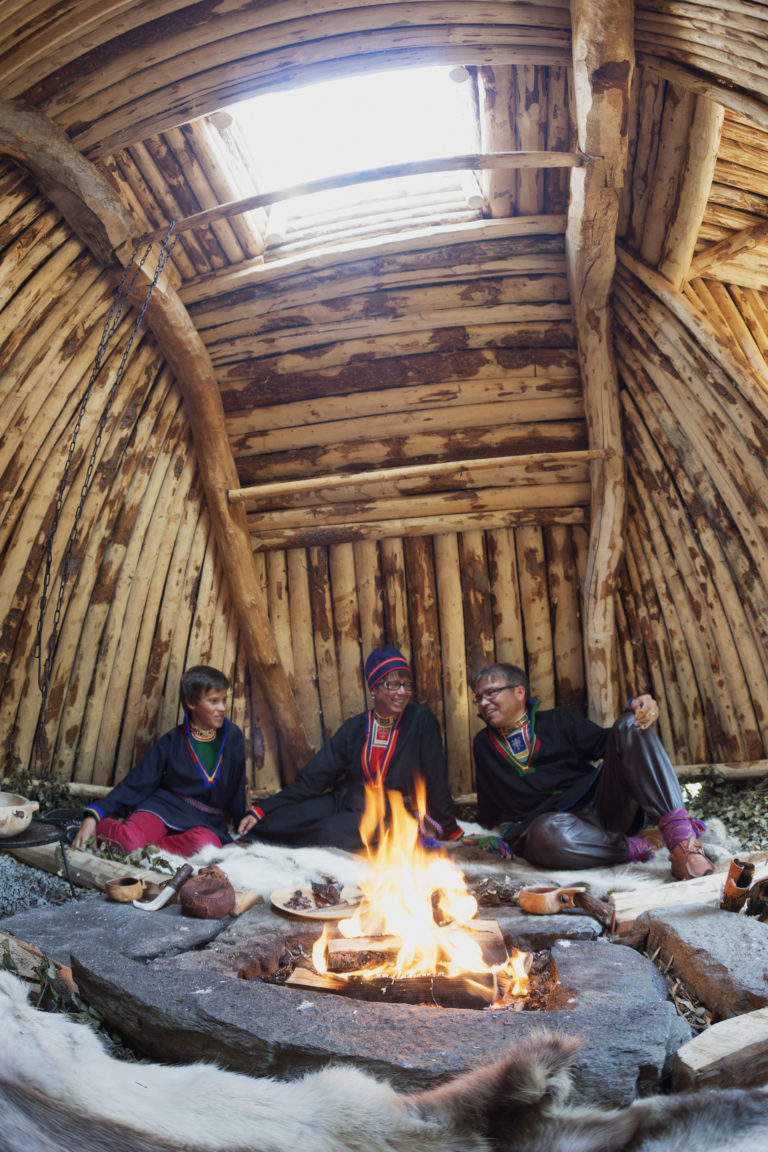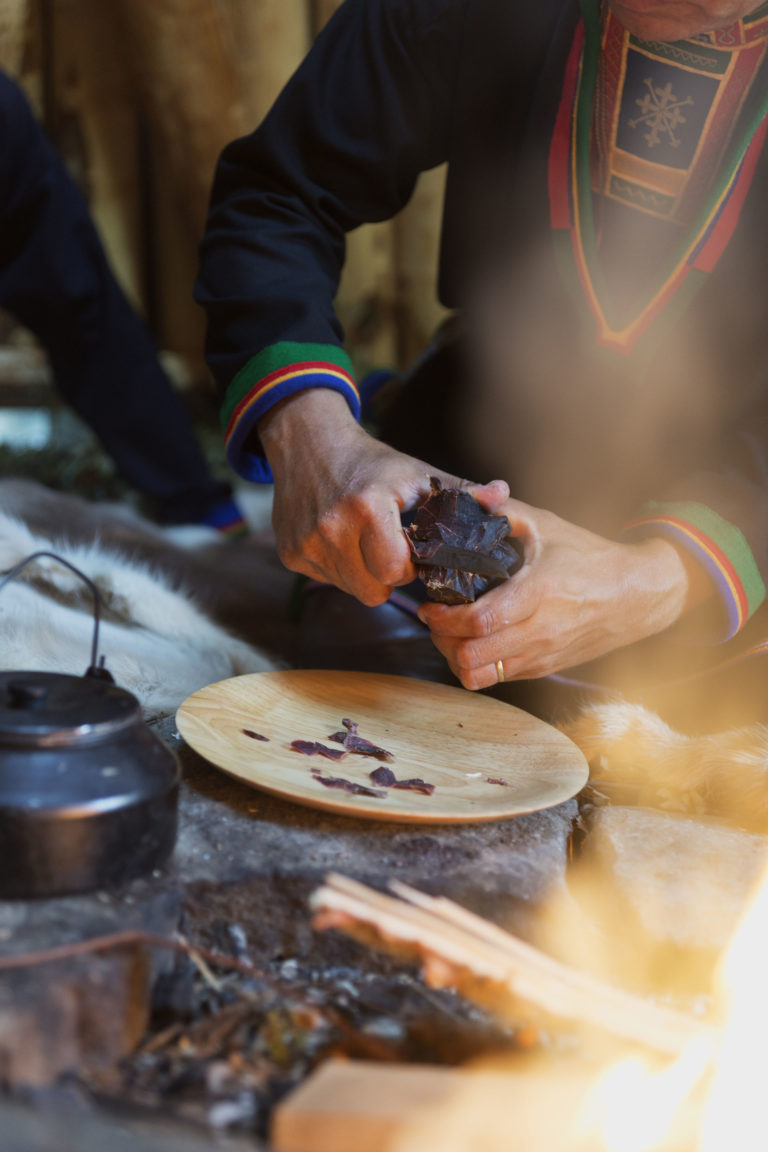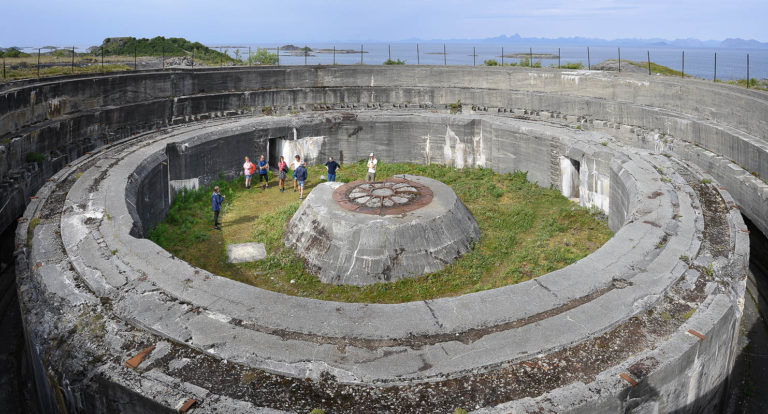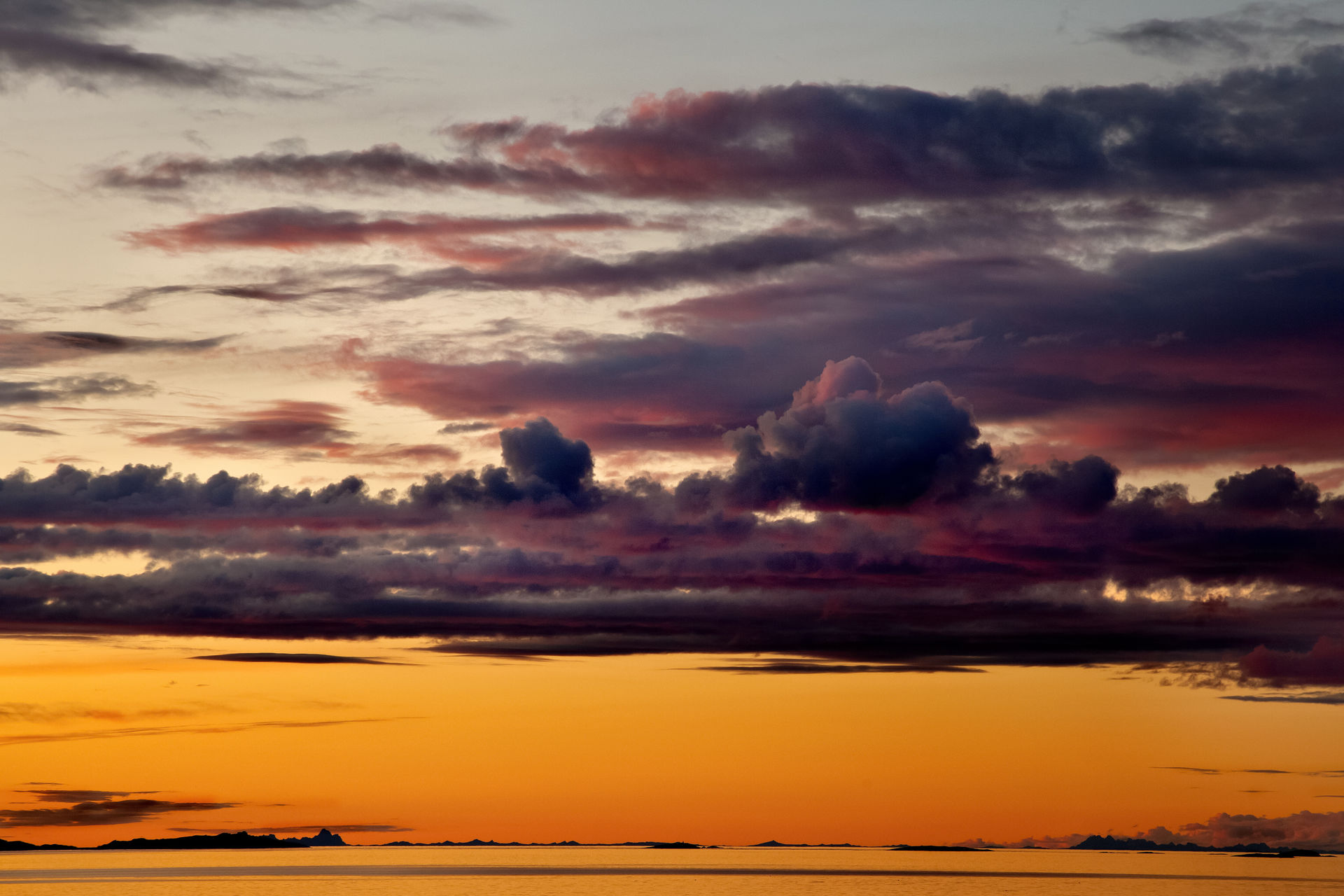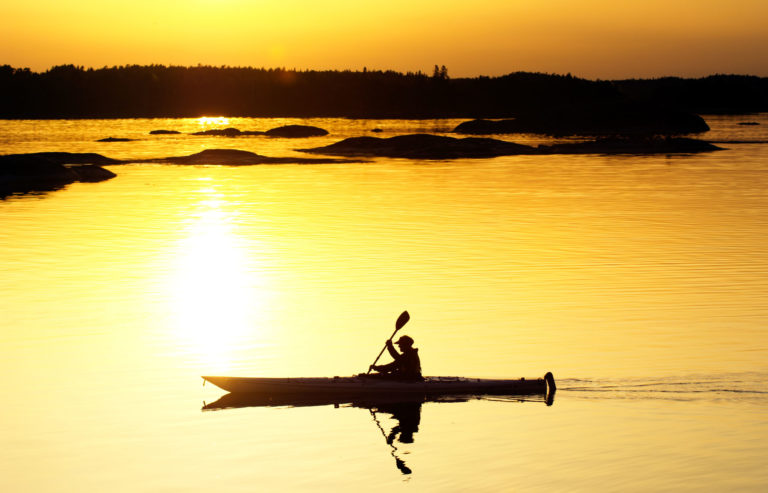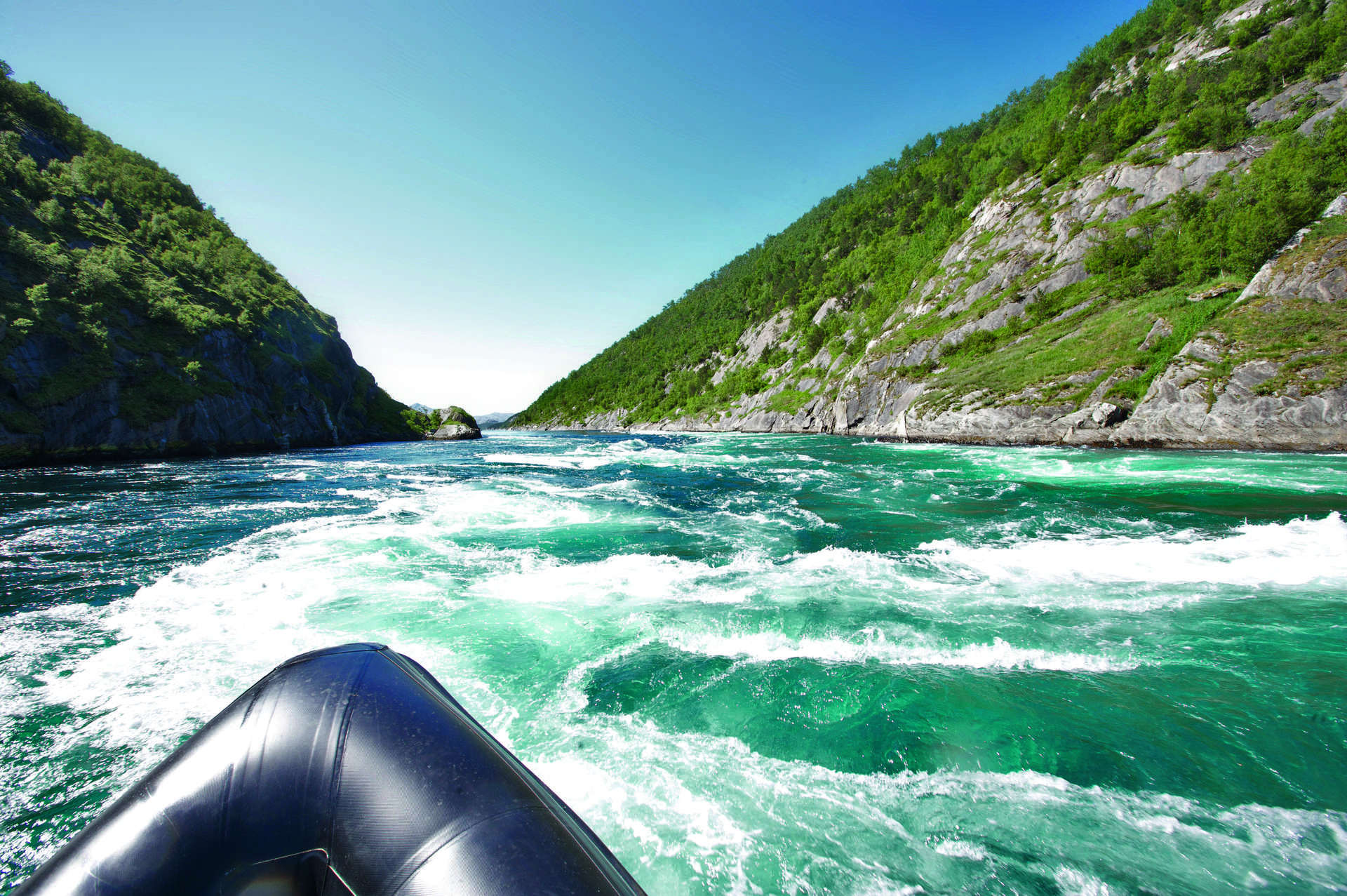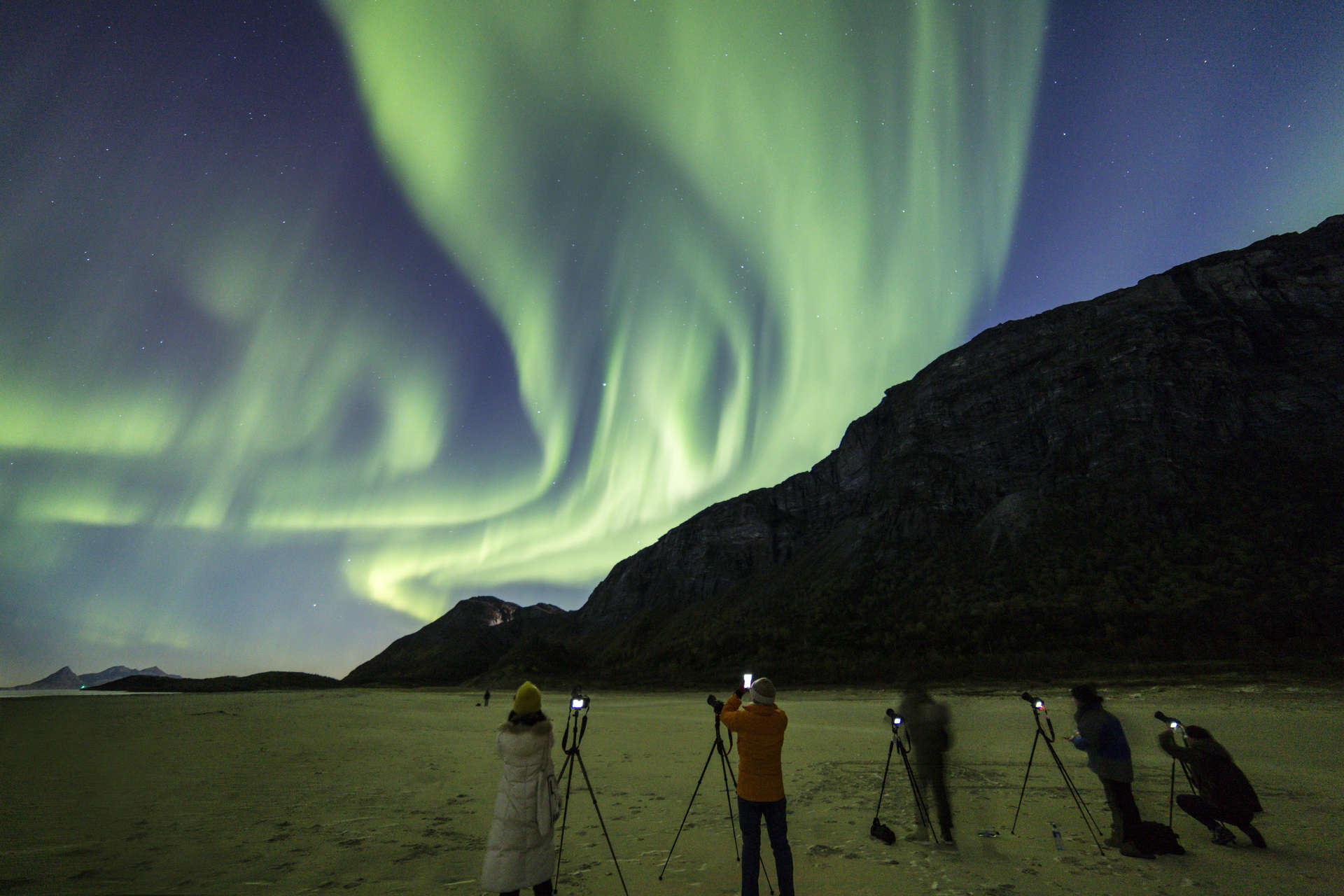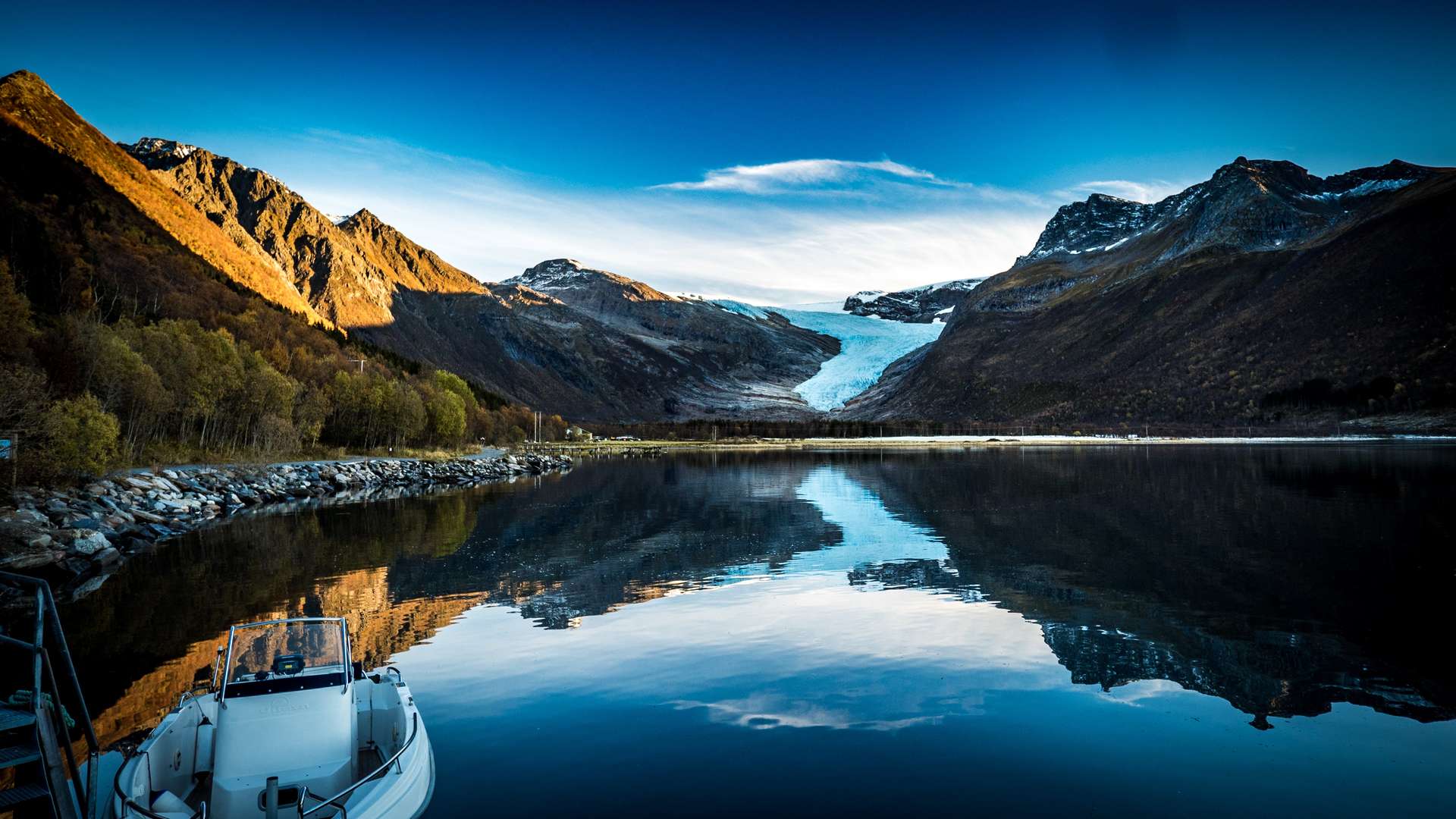The European Capital of Culture 2024, Bodø, is found in a landscape of endless variety just north of the Arctic Circle.
Bodø is the meeting point of the coast
Vibrant and lively Bodø is the heart of the Salten region, as well as Northern Norway’s second city. This is the place to walk the streets, have coffee in chic coffee bars, dine in a good restaurant and go shopping. Photographers go out on the breakwater or even to the little Nyholm fortress to see the centre with some distance with the peaks of the Børvasstindan in the backround, or go up the steps to the hill of Rønvikfjellet to see the city from above. Streetwalkers also get stunned at the unusual street art, turning up in unexpected places.
Downtown Bodø was rebuilt after WWII bombing
The 27th of May 1940, as the Nazi invaders were tightening their grip on Norway, Bodø was still in allied hands. As a punishment, the city was bombed by German planes, and almost the entire downtown and port area burned, as well as much of the residential areas. After the war, the city was rebuilt in modern lines, the style we can reconstruction style. Despite limited funds, the architects managed to give the city a simple, beautiful expression of modernity. A walk around town is thus a meeting with modernist architecture from the optimistic post-war era.
Bodø Cathedral and the city hall are modernist icons in Bodø
Maybe the most remarkable of the reconstruction buildings is the 1956 Bodø Cathedral. It enjoys a commanding position above the main street, and is a modern concrete interpretation of the early Christian basilica. With some luck you might be able to hear the carillon from the free-standing belfry. Next to it is the city hall, which again is a modern interpretation, this time of renaissance city halls. It thus has a free-standing clock tower, communicating with that of the cathedral next door. Go indoor and have a look at the staircase
Bodø will be European Capital of Culture 2024
Bodø was a hot spot in the cold war
In 1960, an American U2 (no, not that Irish band..) plane took off from Pakistan, with the intention of photographing USSR military installations. It was supposed to land in Bodø, but was shot down near Sverdlovsk (now Jekaterinburg) on the way. This caused a major stir-up between the US and the Soviet Union, and Bodø was the focus of international media attention.
How the air was conquered is explained in the Aviation Museum
To learn more about the U2 incident, go visit the Norwegian Aviation Museum. This museum presents the whole history of flying in Norway. Roald Amundsen’s flights across the North Pole by plane and airship, the woman pioneer Gidsken Jakobsen, the building up a of a Norwegian air force in exile during WWII, the cold war and the development of civilian aviation until now are among the themes presented. Plane geeks will love seeing all the planes exhibited in the big hall, lovers of history will deepen their understanding of the 20th C. and kids of all ages will love the flight simulator.
Bodøsjøen has many sights in scenic surroundings
3 km from the centre, Bodøsjøen is a residential and forest area with commanding views of the Børvasstindan on the other side of the Saltfjord. A gem in Bodøsjøen is the Bodin church from the early 13thc, with a baroque bulb turret on top. Some sculptures survive from the middle ages, and the altar as well as the pulpit are made in a decorated 17th. C. baroque. Next to it, the Galleri Bodøgård is a gallery of contemporary art. In addition there is the Nordland Museum, with a collection of old houses from the Salten area.
The new Jekt Trade Museum sums up Northern Norwegian history
The proud Anna Karoline from 1876 is the last jekt in the north. A jekt is a freight ship, meant to transport dried fish to Bergen for the international markets. Once, there were some 200 making the journey to Bergen, providing a lifeline for the national economy, but also bringing luxury goods as well as intellectual impulses to our remote, Northern region. A tour of the Jekt Trade Museum is thus a key to understanding the history of the north.
Kjerringøy trading post is the queen of the trading posts
A trading post is the point of operation for a Northern Norwegian tradesman. He (or in this case, she…) would buy fish from the fishermen, have it transported to Bergen and beyond, import flour, coffee, sugar and luxury articles and sell it locally. As the fish trade was booming in the 19th C, the merchants got very rich. No trading post was richer than Kjerringøy, which is very apparent in the grand-style wooden buildings and the rich interiors. Taking the trip out of Bodø to Kjerringøy is thus a must.
Participate on a guided tour at Kjerringøy
The guides at Kjerringøy are highly trained and skillful. On their tour, you get to see the living quarters of the merchant family, with a wall-paper printed 17 times in Paris costing the equivalent of a freight ship. The contrast to the modesty of the “common people’s” quarters is striking. The shop, the bakery, the boat houses and all the other buildings complete the image.
Spend more time at Kjerringøy
Kjerringøy is the favourite excursion point for Bodøites in Summer. They come here to buy cheese from the little cheese factory, to look at art in the Zahlfjøsen gallery, study the paintings of popular artist Karl Erik Harr in his gallery and to walk on the beach and have a good time. Coming here requires a short ferry crossing, which makes the place feel like far away from the city, even if the distance is short.
Saltstraumen is a natural wonder giving 4 spectacles a day
The Saltfjord is a huge fjord system, reaching 80 km inland, under different names. However, near the mouth there is a passage that is both shallow and narrow. You could compare it with all 90 000 football fans at Wembley Stadium trying to get out through a single door after the match. When the tide comes in, there is simply way too much water pressing its way through the narrows. A fantastic spectacle of whirlpools can be observed from the cliffs on the shore as the water rushes through in 10 to 15 knots. Go there on your own, possibly with a fishing rod, or take a RiB tour into the whirlpools.
The Børvasstindan mountains
Rising up 1177 metres from the Saltstraumen current are the majestic peaks of the Børvasstindan range. They are split in two sections, the eastern and western range. You see them clearly from the city of Bodø, but for many that is not enough.The peaks are a full-day excursion, but absolutely feasible for anyone in regular shape. If you’re not up to such an feat, a hike through the Åselidalen valley gets you really close to the peaks.
Take the boat to “Væran” – the island communities
For the 18 inhabitants of the island of Givær or the 40 ones living on Landegode, life is very different from Bodø city. It’s all about fishing, with a bit of sheep farming on the side. There is, however, a boat route making a loop between the islands. You can do a tour of the islands without getting off anywhere, or you can go out in the morning, spend the day on the islands and go back in the afternoon. Bring a packed lunch and plenty of clothes, and have a day somewhere you though you’d never go.
Explore the Salten Region
Bodø is the centre of the region of Salten, going from the Arctic Circle in the south to the Tysfjord in the north. The Saltfjellet mountain range creates a barrier in the south, with towering mountains and the big Svartisen icecap. To the east, the Scandinavian keel range with summits up to 1900 metres of altitude. This region has a long coast with thousands of islands, islets and skerries. On the bigger islands and the mainland, mountains rise more than 1000 metres up. This landscape has many aspects, wild, weather-beaten and raw at some point, green, fertile and welcoming at other locations. The variety is endless, and there is something new around every bend.
The Fleinvær Refugium gives you time to think
Fleinvær is a cluster of hundreds of low islands south of Bodø. Here, a number of simple, modern wooden-clad cabins melt seamlessly into the stark, weather-beaten scenery. The programme out here is simple; think, watch the birds fly by, go for a walk on the Sørvær island, turn off your mobile and relax. The architect project has caused great interest internationally.
Gildeskål has the oldest church in Northern Norway
One of the most scenic areas near Bodø is Gildeskål. Towering mountains, a myriad of islands and friendly farmland along the coasts; the landscape is endlessly varied and very green. The old church of Gildeskål was maybe built around 1120-30, and is the oldest one in Northern Norway. Another attraction is the viewpoint at Ureddplassen, from where you spot both the Lofoten islands and for about a month the Midnight Sun.
Go to the southern islands
There is a multitude of small islands in the south of the Salten/Northern Helgeland area. Støtt has 30 inhabitants, WWII bunker remnants and peaceful walks starting from the very comfortable trading post turned guesthouse. Bolga is a vibrant community with some 100 inhabitants and a hike to a fabulous viewpoint, or kayaking around the 365 islands around it. The archipelago of Rødøy has numerous islands, from the lion-shaped mountain of Rødøyløva via the old trading post of Selsøyvik to the outer most, Myken, with its lighthouse and whisky distillery. There are boats between all these islands, which of course turn into sightseeing cruises in the stunning landscape.
The Engenbreen glacier is a tongue of the Svartisen icecap
Norway’s second biggest glacier, the Svartisen, is the southern boundary of the Salten Region. The mountains rise up to 1500 metres, and catch the clouds. At this altitude, however, it falls as snow most of the year, and has accumulated to the glacier we have today. The glacier is visible many places south of Bodø, but the Engenbreen glacier descends from the main glacier towards Lake Svartisvatnet. Here you can go glacier hiking, or just admire it from the sea. If you don’t go too close, you can also approach the lower front. All this is surrounded by stunning fjords with steep pinnacle mountains, notably the Holandsfjord.
The ice is turned into industry
The glacier is a constant source of water in the lowlands. This has been turned into abundant, cheap hydro electric power, which is used in Glomfjord to make fertilizer. In the 20th c., the industrial town of Glomfjord was turned into an “ideal” community by the Norsk Hydro company, complete with housing, a ski station and other welfare measurements for the workers. Today you can see all this in the Industry Museum. Go for a walk around Glomfjord too, it has quite a lot of interesting architecture from the 20th C.
Saltdal is the hotspot of summer
When those summery heatwave come in from the East, the highest temperatures in the north are measured in Saltdal. The glacier-covered mountains protect against humidity from the sea, and chances of clear skies and good weather are very good. Forest hiking is particularly good in this dry summer climate, and if you do the walk up the Junkerdalen Valley, you can study lillies and orchids that enjoy the dry, sunny climate.
Sulitjelma is the old mining town in the wilderness
For much of the 20th c., Sultijelma, between the Saltfjord and the Swedish border, was an active mining community, exporting copper and sulphur. Now, the mines are closed and the railway converted to a regular road. However, the local architecture bear witness to the riches earned from the mountains. The old mining village of Jakobsbakken is particularly pretty on an altitude of 600 metres. You can participate in a guided tour through the mines. Equally stunning are the hikes you can make to the surrounding mountains, from short walk to climbing the highest mountain in the area, Suliskongen, at 1908 metres.
Steigen is an old centre for Northern Norway
A drive through the 8 km long Steigen Tunnel is a drive from untouched, dark, forested wilderness to green, open and welcoming landscapes under impressive peaks. Engeløya Island is the old centre, and the medieval stone church here is surrounded by remnants from the Viking and iron age. The big Sigarshaugen mound is where Northern Norwegians gathered to make the decisions in the Viking age. Nearby, at Moa, you can clearly see the remnants of houses in a circle. Maybe this was a military camp in the iron age? No traces of everyday life have been found here,
Batterie Dietl was built for enormous cannons
During WWII, the occupying forces built a stronghold on an island off Steigen, called Batterie Dietl. This was done with the help of slave labour from the Soviet Union, who suffered an appalling mortality. Today, you can participate on a guided tour through the premises, and see both living quarter and the bases of enormous cannons that once guarded the sea route to the iron ore port of Narvik from allied attacks.
Hamsunsenteret is a “vertical insult”
Hamarøy is a green and fertile peninsula amid majestic mountains, filled with light, leafy forest and farmland. In this pleasant landscape, the Hamsunsenteret (Hamsun centre) crashes with its dark, slightly askew, and vertical shape, deemed “a vertical insult” by the Northern painter Karl Erik Harr. Controversial, yes endlessly interesting, and uncompromisingly surprising, this building does something highly original; it interprets the books of Nobel prize laureate Knut Hamsun through its shapes, its windows, its staircase, balconies and countless other aspects. Refreshingly simple, even those who have never read a Hamsun book will be delighted. Or maybe provoked?
Tranøy lighthouse overlooks the Lofoten Islands
Another Hamarøy tower is the Tranøy lighthouse at the western, outer end of the peninsula. Dramatically situated on a cluster of skerries facing the Lofoten Islands, it is a photographer’s dream. Walk on the jetty out there, go on a guided tour on the island, have lunch in the converted boat house and just look around. Beware of angry terns. You can also stay the night in the old lighthouse keepers’ quarters.
The Arran museum tells the story of the Sami fjord people
Tysfjord, this majestic deep and wide fjord that almost divides Norway in two, is home to one of Europe’s smallest language communities, the Lule Sami. This language is also spoken on the Swedish side of the border, by a combined 500-1000 people. The Arran (“fireplace”) Cultural centre has an exhibit on the unique culture around the fjord, focusing on reindeer herding, agriculture and fishing, as well as on the cultural, spiritual and religious aspects of this culture.
The Midnight Sun is Bodø’s coat of arms
From the 30th of May to the 11th of July, meaning for more than a month, the Midnight Sun shines in Bodø. A favourite among the locals is to go up to the city mountain of Rønvikfjellet to see the sun next to the island of Landego, with the peaks of the Lofoten islands as a distant backdrop. The luxury variety is to stay take the lift to the top floor of one of the two highest hotels in Bodø and see it all from the terrace.
See the Midnight Sun elsewhere in Salten
All of Salten is prime Midnight Sun territory. The island of Myken in the south sees it from about the 4th of June to the 8th of July. At Oppeid in the north, the duration is from the 26th of May to the 16th of July. However, in such a mountainous area as Salten, the sun might be hiding behind a mountain at midnight. Ask the locals where to look, be it a mountain outlook in the inland or along the fjords, or a low point along the coast. Favourite Midnight Sun photo motives include the Tranøy Lighthouse, the Myken Lighthouse, the Ureddplassen on the Gildeskål/Meløy border and the top of Bolga Island.
Northern Lights in Bodø and Salten
Positioned north of the Arctic Circle, Bodø and the Salten region enjoys plenty of Northern Lights in the darker half of the year. Some people prefer to wait for the Northern Lights in a sky bar in a Bodø Hotel, and with some luck you see it from the terrace dancing over the Lofoten Islands in the north west. Along the coastline of Salten, there are numerous scenic spots to wait for the Northern Lights. If you want to maximise your chances, you can go to the dry inland areas like Saltdal or Sulitjelma. Some of the fjords in the northern Salten area are also in the rain shadow and have clear skies more frequently. Both at Jakobsbakken and Bodø, Northern Lights chases are organised.
Møsbrømlefse is the sweet favourite of Salten
A speciality in Salten you should not miss, is the møsbrømlefse. A “lefse” in this context is a little tortilla-like round, soft bread. This is filled with møsbrøm, a mix of meltet wey cheese (“brunost”) and milk or cream. Wrapped like an envelope, it gets a doll-up of sour cream, melted butter and sirup. Served warm, this yummy and rich delicacy keeps you going most of the day. Look for it in cafés where locals go, and at every festival and event it goes without saying.
Practical about Bodø and Salten
Bodø is found just north of the Arctic Circle in Northern Norway, in the county of Nordland.
Salten is a region with its own character, dialect and identity in Northern Norway. It stretches from the Saltfjellet range in the south to the Tysfjord in the north, with Bodø at its centre.
Bodø’s airport has frequent connections to Oslo, but also to Trondheim, Bergen and Tromsø. The legendary shipping line of Hurtigruten calls at Bodø both heading north and south. The Nordland Railway connects Bodø, Fauske and Rognan with Trondheim and Oslo.
The railway is useful between Bodø, Fauske and Rognan. The catamaran Nordlandsekspressen connects Bodø with coastal communities south and north of Bodø. There are local buses in Bodø itself, and to almost any inhabited location in the Salten region. EnTur is the best website for public transport.
Bodø has a great selection of mid range and first class accommodation. There is also camping and budget options, along with a youth hostel. Out of town, a number of self catering huts and holiday homes on picturesque places, campsites and holiday homes. The E6 main artery has a wide selection on mid range hotels and guesthouses catering to people on the road.
Most visitors come in the lovely, bright Summer period. The Midnight Sun shines from late May to early to mid July, depending on the latitude. The coastal weather can be a bit of a lottery, but the inland valleys are dry and sunny with temperatures frequently passing the +25C mark. Mountain hikes, kayaking, visiting museums and attractions that all have extended open hours, fishing… there is plenty to do, and in the Norwegian school holiday from Mid Summer to early August, you have plenty of company. This is particularly true the first three weeks of July.
Mid to late August already sees tourism slowing down, and in September the mountain forest is ablaze with colours. This is a lovely time for mountain hikes and kayaking, as the water is clear and the air is fresh.
October and November can be crisp a clear, or wet and windy, but now the Northern Lights are frequent on the night sky. This is also the time to meet the locals, enjoy good food and have a glass in a candle-lit bar.
Mid Winter, December and January, are the depth of winter. Kjerringøy has fun pre-Christmas week-ends, and the Chrismassy atmosphere is all around. This is a time with concerts, culture and indoor togetherness.
February and March have more guaranteed snow, and this is definitely the time for skiing and fun snow activities in both the city mountains around Bodø and in the Sulitjelma area. The coastal areas are snow-clad and look fantastic, both in the daytime sunlight and in the evening blue light. The night is, however, reserved for the Northern Lights.
April is when spring starts on the outermost islands and the outer coast. The weather is the best of the whole year. Go for long walks along the shore, see the rich birdlife and enjoy the first spring flowers. However, the mountain resorts have plenty of snow, and see a lot of cross country skiers. By May, spring has all Salten in its grip. May sees very few tourists, there are many public holidays and the weather is generally good.

Book your trip to Bodø and Salten today
For the official travel guide to Bodø and Salten with updated information on accomodation, activities, attractions, events, cutlure and other information on Bodø and Salten, click the link below.
